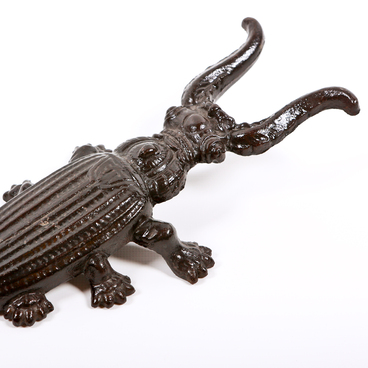The collection of the Kasimov Museum-Reserve contains relief dutch tiles — ceramic decorative tiles that were used in Russia for palaces and temple finishing, as well as for stove lining.
The tiles were made using wooden molds, where clay was poured. Product appearance largely depended on the skill of a woodcarver who made the carved molds.
Most often, tiles had a red shade derived naturally: the clay was fired in a furnace, and then covered with glaze to make the surface shine.
The Dutch tile from the museum collection was used for lining the walls of the tomb of the Afghan-Mohammed Sultan, which is located on the territory of the old Tatar cemetery in Kasimov.
Afgan-Muhammad was the son of the Arab Muhammad Khan, the ruler of the ancient state of Khorezm in Central Asia. The crown prince arrived in Russia in 1622 for service — this was the official reason. But there is another version — that the ambassador Ivan Khokhlov brought an eleven-year-old Afghan-Mohammed to Russia to save him from his older brothers. They killed their father and forcibly seized power in Khiva, the capital of the state.
The crown prince settled in Moscow, where he was received with all honors by Tsar Mikhail Fyodorovich Romanov. Afgan-Mohammed lived in Russia all his life and died in 1648. It was decided to bury him at the Tatar cemetery in Kasimov. The heir’s wife ordered a mausoleum from Ryazan craftsmen — a small rectangular vaulted building made of red brick. It was built a year later.
The tomb architecture was an example of the influence of Russian architecture on the culture of the Kasimov Tatars. The entrance to the mausoleum is located in the western wall. It resembled the traditional buildings of ancient Rus: richly decorated with carved bricks and white stone details, as well as dutch tiles.
At the same time, above the entrance, in a frame of profiled bricks, there was a white stone board with Arabic inscriptions. At the corners of the building, there were brick semi-columns, pilasters, and dutch tiles — they were placed in three rows, which were separated by horizontal annulets of hewn brick.
The tiles were made using wooden molds, where clay was poured. Product appearance largely depended on the skill of a woodcarver who made the carved molds.
Most often, tiles had a red shade derived naturally: the clay was fired in a furnace, and then covered with glaze to make the surface shine.
The Dutch tile from the museum collection was used for lining the walls of the tomb of the Afghan-Mohammed Sultan, which is located on the territory of the old Tatar cemetery in Kasimov.
Afgan-Muhammad was the son of the Arab Muhammad Khan, the ruler of the ancient state of Khorezm in Central Asia. The crown prince arrived in Russia in 1622 for service — this was the official reason. But there is another version — that the ambassador Ivan Khokhlov brought an eleven-year-old Afghan-Mohammed to Russia to save him from his older brothers. They killed their father and forcibly seized power in Khiva, the capital of the state.
The crown prince settled in Moscow, where he was received with all honors by Tsar Mikhail Fyodorovich Romanov. Afgan-Mohammed lived in Russia all his life and died in 1648. It was decided to bury him at the Tatar cemetery in Kasimov. The heir’s wife ordered a mausoleum from Ryazan craftsmen — a small rectangular vaulted building made of red brick. It was built a year later.
The tomb architecture was an example of the influence of Russian architecture on the culture of the Kasimov Tatars. The entrance to the mausoleum is located in the western wall. It resembled the traditional buildings of ancient Rus: richly decorated with carved bricks and white stone details, as well as dutch tiles.
At the same time, above the entrance, in a frame of profiled bricks, there was a white stone board with Arabic inscriptions. At the corners of the building, there were brick semi-columns, pilasters, and dutch tiles — they were placed in three rows, which were separated by horizontal annulets of hewn brick.

